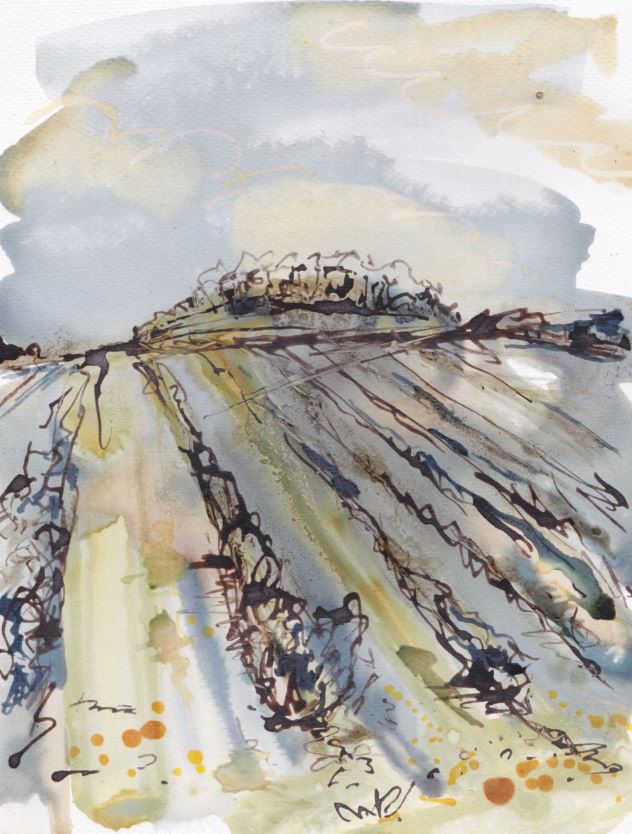At Plymouth College of Art and Design this autumn, the MA post graduate show had some stunning landscape drawings on display by Wendy Howarth. Something seemed familiar and I slowly recognised the distinctive hills of where I work every day – Riverford Organic Farm in South Devon.
The drawings felt alive with movement, capturing the physicality of the team harvesting, the curves and colours of the land. I went over to find out more and was amazed to discover that not only were the drawings of Riverford, they were painted with pigments made from the soil itself and the veg that grows in it. I caught up with Wendy after the show to hear more about her inspiration, materials and creative practice:
What attracted you to drawing the Riverford’s landscape and people?
Wendy Howarth (WH): I’ve been an artist and illustrator all my life. I love drawing people just doing what they do and the environment figures are in, particularly in landscapes that are familiar to me – so Devon is a focus. For my final MA project, I wanted to follow the seasons through a year exploring the weather, crops, colours and activities. I grew up near the farm and my husband is Ed, assistant field manager, so I am aware of a lot that happens on the farm. We eat the produce, I jam, pickle, bake and cook the grade out veg – Riverford is integral to my life.

What inspires you, and what do you use to make your inks?
WH: I woke up last Christmas morning, having decided to illustrate a year on the farm, thinking about making my paints from Riverford crops and foraged plants rather than using acrylic paint. I bought a book called Make Ink by Jason Logan for myself as a Christmas present and gave myself a week to make some inks from grade out veg to see what would happen. This was a revelation to me – I was amazed by the colours and am so excited by their diversity and seasonality that I love making them. This is where my phrase ‘From the farm – of the farm’ originated.

What are the best and trickiest things about working with natural materials?
WH: The obvious drawback of my inks is the fact that they are not light fast and the majority are fugitive, but this became a positive in terms of my project as I used this as part of the narrative. I call them ‘Living inks’ and enjoy the fact they change over time. I now digitally scan the finished images and reproduce them in the form of limited edition prints. I would love to continue my research, collaborating with chemists to find viable lightfast botanical commercial digital inks.

Share something you’ve learnt through your current art practice.
WH: I have learnt so much through my research and refining of my practice that it is hard to choose. I will say that one thing that is pivotal. It is often the mundane that produces the most beautiful, informative and interesting image.










0 Comments